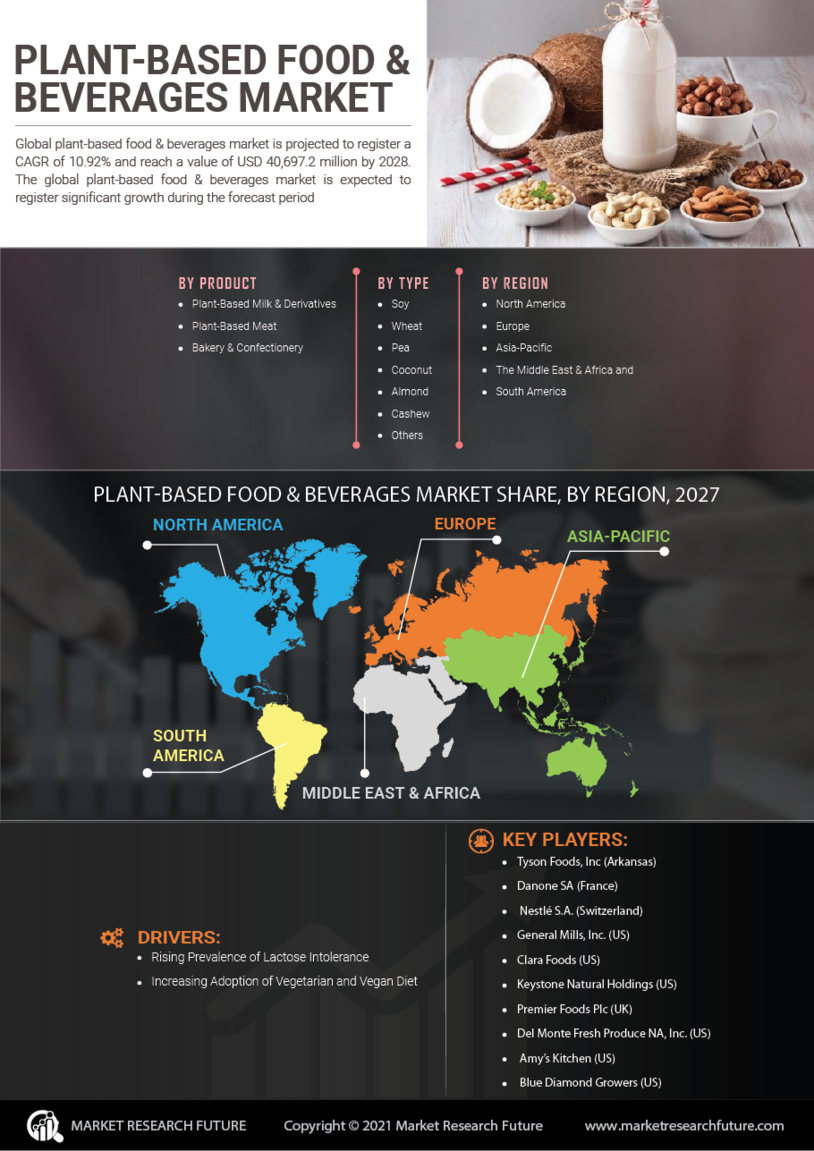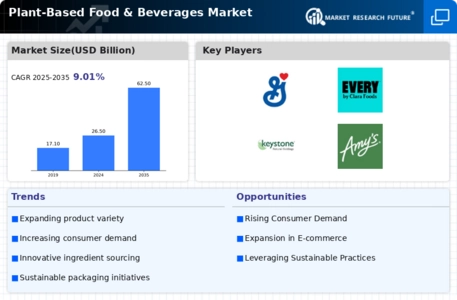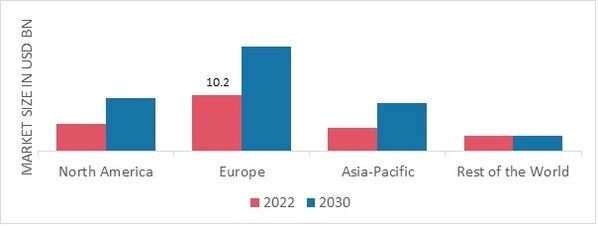Health Consciousness
The increasing awareness of health and wellness among consumers appears to be a primary driver of the Global Plant-Based Food and Beverages Market Industry. As individuals seek to adopt healthier lifestyles, they are gravitating towards plant-based alternatives that offer nutritional benefits without the drawbacks associated with animal products. This trend is reflected in the projected market value of 26.5 USD Billion in 2024, indicating a robust demand for products that align with health-conscious choices. Moreover, the rise in chronic diseases linked to dietary habits further fuels this shift, as consumers actively seek out plant-based options to mitigate health risks.
Diverse Product Offerings
The expansion of diverse product offerings within the Global Plant-Based Food and Beverages Market Industry is a notable driver of growth. Manufacturers are innovating to create a wide range of plant-based products, from meat substitutes to dairy alternatives, catering to various dietary preferences and restrictions. This diversification not only attracts a broader consumer base but also encourages trial and adoption among those who may have previously been hesitant. The increasing availability of these products in mainstream retail channels further enhances accessibility, contributing to the anticipated compound annual growth rate of 8.12% from 2025 to 2035.
Market Growth Projections
The Global Plant-Based Food and Beverages Market Industry is witnessing remarkable growth projections, with expectations to reach a value of 62.5 USD Billion by 2035. This growth trajectory is underpinned by various factors, including rising health consciousness, environmental sustainability, and technological advancements. The market is anticipated to experience a compound annual growth rate of 8.12% from 2025 to 2035, indicating a robust expansion phase. Such projections highlight the increasing consumer demand for plant-based alternatives, which are becoming integral to modern diets. This growth not only reflects changing consumer preferences but also the industry's ability to innovate and adapt to market needs.
Technological Advancements
Technological advancements in food processing and production are playing a crucial role in shaping the Global Plant-Based Food and Beverages Market Industry. Innovations such as improved extraction methods and fermentation technologies are enabling the development of more palatable and nutritious plant-based products. These advancements not only enhance the sensory attributes of plant-based foods but also improve their nutritional profiles, making them more appealing to consumers. As a result, the market is poised for substantial growth, with an expected valuation of 26.5 USD Billion in 2024, driven by the continuous evolution of product quality and consumer preferences.
Environmental Sustainability
Concerns regarding environmental sustainability are increasingly influencing consumer choices within the Global Plant-Based Food and Beverages Market Industry. The production of plant-based foods generally requires fewer natural resources and results in lower greenhouse gas emissions compared to traditional animal agriculture. This awareness has led to a growing preference for plant-based diets, as consumers recognize the potential impact of their food choices on climate change. As a result, the market is expected to expand significantly, with projections indicating a value of 62.5 USD Billion by 2035. This shift towards sustainability reflects a broader societal movement towards eco-friendly practices.
Changing Consumer Preferences
Shifting consumer preferences towards plant-based diets are significantly impacting the Global Plant-Based Food and Beverages Market Industry. Younger generations, in particular, are more inclined to embrace plant-based options, driven by ethical considerations, health benefits, and environmental concerns. This demographic shift is fostering a culture of experimentation with plant-based foods, leading to increased demand for innovative products. As consumer preferences continue to evolve, the market is projected to experience a compound annual growth rate of 8.12% from 2025 to 2035, reflecting the growing acceptance and integration of plant-based diets into mainstream eating habits.






